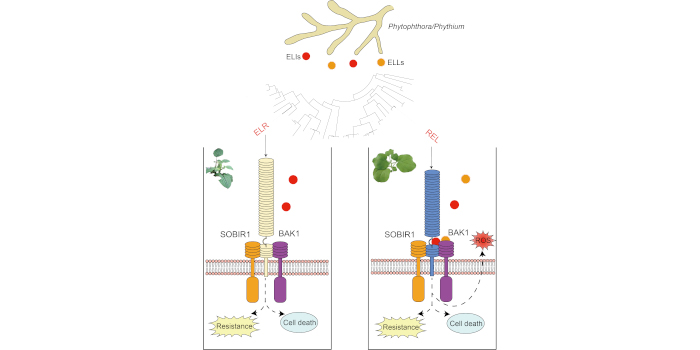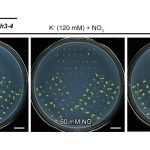Elucidating elicitin recognition
Chen et al. explore the recognition of Phytophthora effectors in Nicotiana benthamiana and the conservation of these responses in the Solanaceae
Background: Plant pathogens employ effectors as weapons to invade and colonize plant tissue. To counteract these effectors, plants have developed surveillance systems that are activated by microbial effectors thereby warning the plant about pathogen attack and triggering defense responses. Phytophthora species are notorious plant pathogens affecting numerous crops, trees, and ornamentals. They secrete a variety of effectors including elicitins, effectors that are unique for Phytophthora and can recruit sterols from host plants for their own benefit. Elicitins also induce cell death in Nicotiana species and some wild Solanum species pointing to functional surveillance systems for elicitins. Elicitin recognition in Solanum microdontum is mediated by a membrane-localized receptor named ELR (ELicitin Response), and heterologous expression of the ELR gene in cultivated potato (Solanum tuberosum) increases resistance to Phytophthora infestans.
Questions: How are elicitins recognized in Nicotiana species? Are the mechanisms underlying elicitin recognition conserved in different plant species?
Findings: We identified a receptor-like protein in Nicotiana benthamiana that we named REL (for Responsive to ELicitins). REL has an extracellular leucine-rich repeat domain that mediates Phytophthora resistance by recognizing and binding different elicitins. Domain deletion and site-directed mutagenesis revealed that a specific domain in REL is crucial for elicitin recognition. In addition, sequence polymorphism in this domain underpins the genetic diversity of REL homologs in various Nicotiana species in elicitin binding and recognition. REL is phylogenetically distant from the S. microdontum elicitin response protein ELR and differs from ELR in its ability to bind and recognize elicitins.

Next steps: Future research will further unravel the mechanisms underlying elicitin recognition by REL and investigate the capability of REL and modified RELs to confer resistance to a broad range of Phytophthora species in various plant species. The long-term goal is to use these elicitin receptors to engineer crops with durable Phytophthora resistance.
Reference:
Zhaodan Chen, Fan Liu, Mengzhu Zeng, Lei Wang, Hanmei Liu, Yujing Sun, Lan Wang, Zhichao Zhang, Zhiyuan Chen, Yuanpeng Xu, Mingmei Zhang, Yeqiang Xia, Wenwu Ye, Suomeng Dong, Francine Govers, Yan Wang, Yuanchao Wang (2023) Convergent evolution of immune receptors underpins distinct elicitin recognition in closely related Solanaceous plants. https://doi.org/10.1093/plcell/koad002



